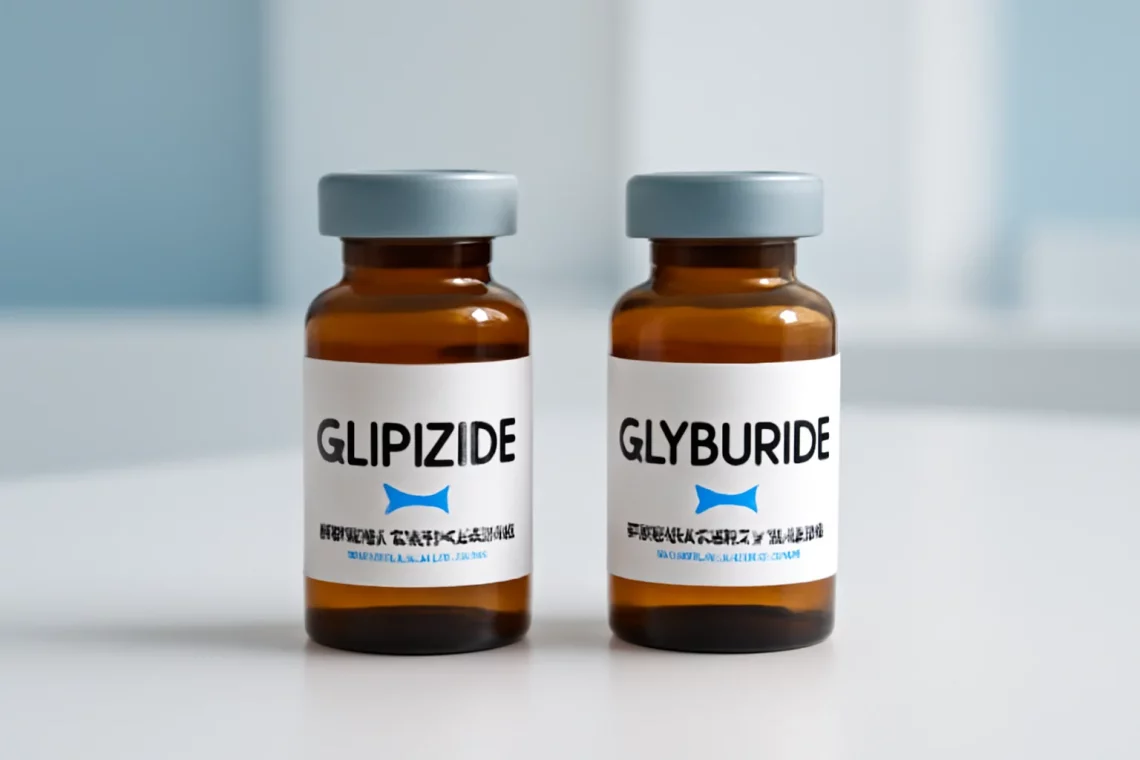
Glipizide vs Glyburide: Which Diabetes Medication is Right for You?
Glipizide and glyburide are two widely prescribed medications used to manage type 2 diabetes. Both belong to a class of drugs known as sulfonylureas, which work by stimulating the pancreas to release insulin, thereby lowering blood sugar levels. Diabetes is a chronic condition that affects millions of people worldwide, and effective management is crucial for preventing complications associated with the disease. As the prevalence of diabetes continues to rise, understanding the various treatment options becomes increasingly important.
While both glipizide and glyburide serve the same purpose, they possess distinct characteristics, mechanisms of action, and side effect profiles. This creates a scenario where patients and healthcare providers must weigh the options and consider individual needs when selecting a treatment plan. Factors such as age, overall health, other existing medical conditions, and even lifestyle choices can influence the effectiveness and appropriateness of each medication.
In this discussion, we will delve deeper into the differences and similarities between glipizide and glyburide, examining their pharmacological properties, efficacy, side effects, and considerations for use. This will provide a comprehensive understanding of these medications, allowing patients and caregivers to make informed decisions in consultation with their healthcare providers.
Understanding Glipizide
Glipizide is an oral medication that is primarily used to treat type 2 diabetes. As a member of the sulfonylurea class, it helps lower blood glucose levels by promoting insulin secretion from pancreatic beta cells. One of the key advantages of glipizide is its relatively rapid onset of action. This means that it can effectively lower blood glucose levels shortly after administration, making it a preferable choice for many patients who need quick control.
The mechanism of action for glipizide involves binding to specific receptors on pancreatic cells, which in turn stimulates insulin release. This process is particularly beneficial for individuals whose bodies still produce some insulin but may not be producing enough to maintain normal blood sugar levels. Additionally, glipizide can improve the sensitivity of cells to insulin, further aiding in glucose uptake and utilization by the body’s tissues.
Dosage and administration of glipizide are typically tailored to the individual’s needs. It is usually taken once or twice daily, with doses adjusted based on the patient’s blood sugar readings and overall health status. It is important for patients to monitor their blood glucose levels regularly, as glipizide can increase the risk of hypoglycemia, a condition characterized by abnormally low blood sugar levels.
Side effects associated with glipizide can include nausea, dizziness, weight gain, and gastrointestinal disturbances. However, many patients tolerate the medication well. It is essential for patients to maintain regular follow-up appointments with their healthcare providers to monitor for any potential side effects and adjust treatment plans as necessary.
Overall, glipizide can be an effective option for managing type 2 diabetes, particularly for those who require prompt blood glucose control. However, patients should always discuss their specific circumstances with their healthcare provider to determine if glipizide is the right choice for them.
Exploring Glyburide
Glyburide, like glipizide, is another oral medication used to manage type 2 diabetes. It is also part of the sulfonylurea class, functioning similarly by stimulating insulin secretion from pancreatic beta cells. However, glyburide tends to have a longer duration of action compared to glipizide, which can influence how it is used in treatment regimens.
The mechanism of action for glyburide is akin to that of glipizide. Upon binding to its specific receptors on the pancreatic cells, glyburide enhances insulin release, thereby lowering blood sugar levels. This action is particularly beneficial for patients who may have reduced insulin secretion but still retain some pancreatic function.
Glyburide is usually taken once or twice a day, with the dosage adjusted according to individual blood sugar levels and response to treatment. The extended action of glyburide can be advantageous for patients seeking more sustained blood glucose control throughout the day. However, like glipizide, glyburide also carries a risk of hypoglycemia, making regular blood sugar monitoring crucial.
Side effects of glyburide may include weight gain, nausea, and gastrointestinal issues. Some patients may experience allergic reactions, although these are relatively rare. Regular follow-up visits with healthcare providers are essential to ensure that patients are tolerating the medication well and to make any necessary adjustments to the treatment plan.
In summary, glyburide can be a suitable option for individuals with type 2 diabetes who require consistent blood glucose management. Its longer duration of action may offer certain advantages, but it is important for patients to consult with their healthcare providers to determine the best treatment approach based on their unique circumstances.
Comparative Efficacy and Safety Profiles
When comparing glipizide and glyburide, it is essential to consider their efficacy and safety profiles to make an informed decision about which medication may be more appropriate in a given situation. Both medications are effective in lowering blood glucose levels, but their individual characteristics can lead to different patient experiences.
Efficacy-wise, both glipizide and glyburide can effectively manage blood sugar levels in type 2 diabetes. However, glipizide tends to work more quickly, making it beneficial for patients who need rapid control of their blood glucose levels. Glyburide, on the other hand, provides a more prolonged effect, which may be suitable for patients who prefer fewer daily doses but still require consistent management throughout the day.
In terms of safety, both medications carry a risk of hypoglycemia, but the degree may vary among individuals. Some studies suggest that glipizide may have a slightly lower incidence of hypoglycemia compared to glyburide, particularly in older adults or those with impaired kidney function. Weight gain is another common side effect associated with both medications, though the extent may differ based on individual metabolism and lifestyle factors.
Additionally, patient adherence to treatment can also be influenced by side effects. For instance, if a patient experiences significant gastrointestinal discomfort or weight gain with one medication, they may be less likely to continue with that treatment, leading to suboptimal diabetes control.
Overall, the choice between glipizide and glyburide should be made on an individual basis, taking into account the patient’s specific health profile, preferences, and lifestyle. Collaboration between the patient and healthcare provider is key in selecting the most appropriate medication for effective diabetes management.
Considerations for Use and Patient Guidance
When considering glipizide or glyburide for the management of type 2 diabetes, there are several important factors that both patients and healthcare providers should keep in mind. These considerations can help ensure that patients receive the most effective and appropriate treatment tailored to their unique needs.
First and foremost, it is essential for patients to disclose their complete medical history to their healthcare providers, including any other medications they are currently taking. Certain drugs may interact with glipizide or glyburide, potentially affecting their efficacy or increasing the risk of adverse effects.
Patients should also be aware of their blood sugar monitoring schedule. Regular monitoring is crucial for those taking sulfonylureas, as these medications can sometimes lead to hypoglycemia. Patients should be educated on the signs and symptoms of low blood sugar, which may include shakiness, sweating, confusion, and irritability. Knowing how to respond to hypoglycemic episodes can help patients manage their condition more effectively.
Lifestyle factors such as diet, exercise, and weight management play a significant role in diabetes management. Patients should work closely with their healthcare providers to develop a comprehensive care plan that includes dietary recommendations and physical activity guidelines. Maintaining a balanced diet and engaging in regular exercise can enhance the effectiveness of glipizide or glyburide and contribute to overall health.
Lastly, regular follow-up appointments are essential for monitoring the effectiveness of the chosen medication and making any necessary adjustments. These visits provide an opportunity for patients to discuss any concerns or side effects they may be experiencing, ensuring that their diabetes management plan remains effective and safe.
In conclusion, both glipizide and glyburide are valuable options for managing type 2 diabetes, but careful consideration and collaboration with healthcare providers are crucial in selecting the most appropriate treatment.
**Disclaimer**: This article is intended for informational purposes only and should not be considered medical advice. Always consult a healthcare provider for personalized recommendations regarding medication and health management.




